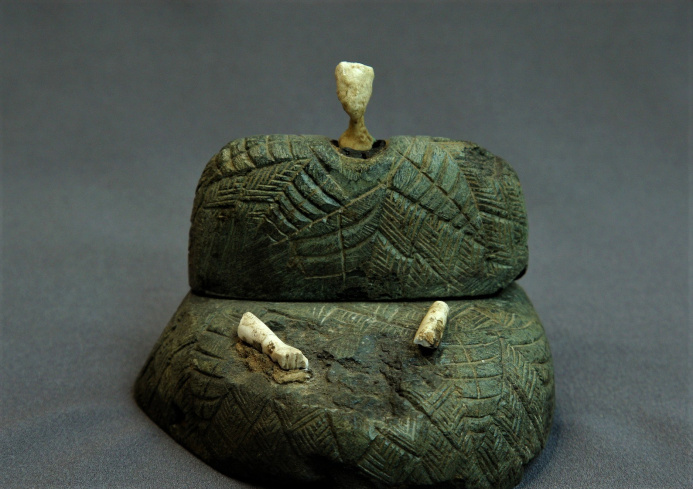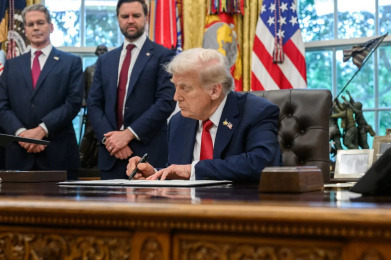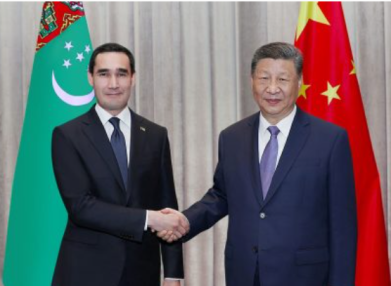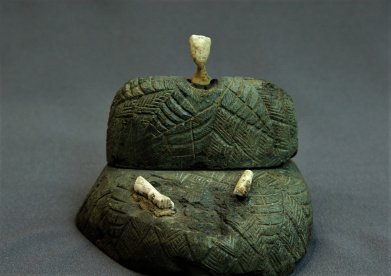"Ancient Civilizations of Turkmenistan" – A Large-Scale Archaeological Exhibition Opens in Rome
26.10.2025 | 11:25 |As part of his official visit to the Italian Republic, President Serdar Berdimuhamedov attended the opening ceremony of the archaeological exhibition "Ancient Civilizations of Turkmenistan," which took place in the Capitoline Museum in Rome. The head of state was warmly welcomed by Rome Mayor Roberto Gualtieri. The ceremony began with a vibrant literary and musical performance by Turkmen artists, which served as a prologue to this large-scale cultural event.
Addressing the participants, Rome Mayor Roberto Gualtieri emphasized the special significance of opening this exhibition on Capitoline Hill – the site where the history of the Eternal City has been shaped for millennia – as a bridge connecting the rich heritage of Central Asia with the origins of European civilization. The exhibition will run until April 12, 2026.
President Serdar Berdimuhamedov, in turn, warmly congratulated those gathered on the opening and expressed confidence that the artifacts on display would generate great interest. He noted that cultural ties occupy a special place in Turkmen-Italian cooperation, which has successfully developed thanks to long-standing traditions and effective humanitarian diplomacy. The exhibition coincided with the year of the widespread celebration of the 30th anniversary of Turkmenistan's neutrality, which, according to the head of state, underscores the contribution of this policy to strengthening friendship and peace between peoples.
Particular mention was made of the successful Turkmen-Italian archaeological cooperation, which began in the early years of the country's independence and continues to this day. Thanks to these joint efforts, numerous examples of cultural treasures have been discovered and studied, some of which are on display in the Capitoline Museum.
The head of state emphasized that the exhibition focuses on two key civilizational centers: ancient Margiana and Parthia. He also recalled that ancient monuments of Turkmenistan, including Ancient Merv (since 1999) and the Parthian fortresses of Nisa (since 2007), are included in the UNESCO World Heritage List.
Margiana, a Bronze Age civilization (3rd-2nd millennia BC) in southeastern Turkmenistan, was contemporary with Mesopotamia and Ancient Egypt, boasting extensive trade and cultural ties.
Excavations conducted since the 1970s by Russian archaeologist Viktor Sarianidi have uncovered fortified cities, temples, and palaces. The most important site, Gonurdepe, is a perfectly planned city with religious complexes. The entire urban and hydraulic system reflects a culture that transformed the desert into a garden, channeling the waters of the Murghab River using advanced engineering solutions for the time.
Necropolises and workshops reveal a complex, multi-layered social organization capable of managing resources, trade, and rituals. It is no coincidence that Margiana displays the influence of cultures from Iran to the Indus, while seals and objects made of silver, bronze, and stone attest to contact with the Elamite and Harappan cultures. Among the finds from Gonurdepe, necklaces made of gold and semi-precious stones stand out, exhibited for the first time in Italy: masterpieces of jewelry art that combine elegance and symbolic power.
Parthia, a state of classical antiquity, is represented by finds from the Nisa site (2nd century BC - 1st century AD) in south-central Turkmenistan, near modern-day Ashgabat. It was one of the most enduring empires in ancient history, rivaling Rome.
Nisa was located on a hill and surrounded by mighty walls crowned with forty-three towers. It served as a residence, a place of worship, and an archive of power: wine cellars, administrative documents on ceramic fragments, and hundreds of sculptures and bas-reliefs have been discovered within its premises. The exhibition features unfired clay heads of rulers, priests, and warriors, executed with a sculptural force that combines idealization and realism. These stern and focused faces convey the psychology of power, striving for both hieraticism and humanity.
Next to them, rhytons—libation vessels made of ivory and terracotta—represent the pinnacle of Parthian art. Decorated with mythological scenes and reimagined Hellenistic motifs, they combine local tradition with Greek imagery, a sign of the encounter of worlds that characterized the empire.
The Nisa ostraca – ceramic fragments with inscriptions – document a complex administrative network: lists of goods, quantities of wine, grain, and metals, revealing a system of control and redistribution of resources typical of an organized state. Nisa was not only a religious center but also a trade hub on the routes connecting the Euphrates and Bactria all the way to China. Its vitality testifies to the fact that Parthia, far from being a static empire, was a bridge between West and East, a partner of Rome, and an original interpreter of Hellenistic culture.
Visitors will also see an ivory throne, gilded figurines, marble statues of Rodogune and Aphrodite, and a fragment of a statue of the head of the Parthian king Mithridates II.
The exhibition draws an invisible connection between Bronze Age Margiana and Hellenistic Parthia. Two civilizations, separated by more than a millennium, are united by a common understanding of space and power: dominion over nature, the sacredness of the sovereign, the centrality of ritual.
The canals of Gonur and the towers of Nisa, gold necklaces and ivory rhytons belong to a single symbolic genealogy—a world where beauty was perceived as order, and order as a form of truth. The layout of the Capitoline Halls accompanies the viewer along this continuum. Oblique beams of light enhance the plasticity of surfaces, map panels and three-dimensional reconstructions depict the original landscape of the oases, and thematic displays unfold the narrative as a geographical and spiritual journey.
Beyond the splendor of more than two hundred artifacts, this exhibition restores Central Asia to its rightful place in ancient history: not the periphery, but the center of a vast cultural network. Between Mesopotamia and India, Turkmenistan was a threshold, a laboratory of forms, where civilizations met and transformed. Today, thanks to collaborative research, these ancient sands once again speak with the voice of matter: a voice that tells the story of the relationship between man and the desert, between art and necessity, between faith and power. At a time when boundaries are once again blurring, an exhibition at the Capitoline Museums reminds us that the most resilient civilizations are born from interaction, not confrontation.
…In his speech, President Serdar Berdimuhamedov also mentioned that the installation of a monument to the great Italian poet Dante Alighieri in the Magtymguly Fragi Cultural and Park Complex in Ashgabat was a historic event in friendly relations.
During the exhibition opening ceremony, two important documents aimed at expanding museum cooperation were signed: a Memorandum of Understanding was signed between the State Museum of the State Cultural Center of Turkmenistan and the Capitoline Superintendence of Cultural Heritage of Italy, and a similar Memorandum of Understanding was signed between the Museum of Fine Arts of Turkmenistan and the Capitoline Superintendence of Cultural Heritage of Italy.
After reviewing the exhibition, President Serdar Berdimuhamedov departed the exhibition site and headed to Rome Fiumicino International Airport for his flight home. Thus, the head of state's official visit to Italy concluded, opening new horizons for friendly Turkmen-Italian relations.
ORIENT











